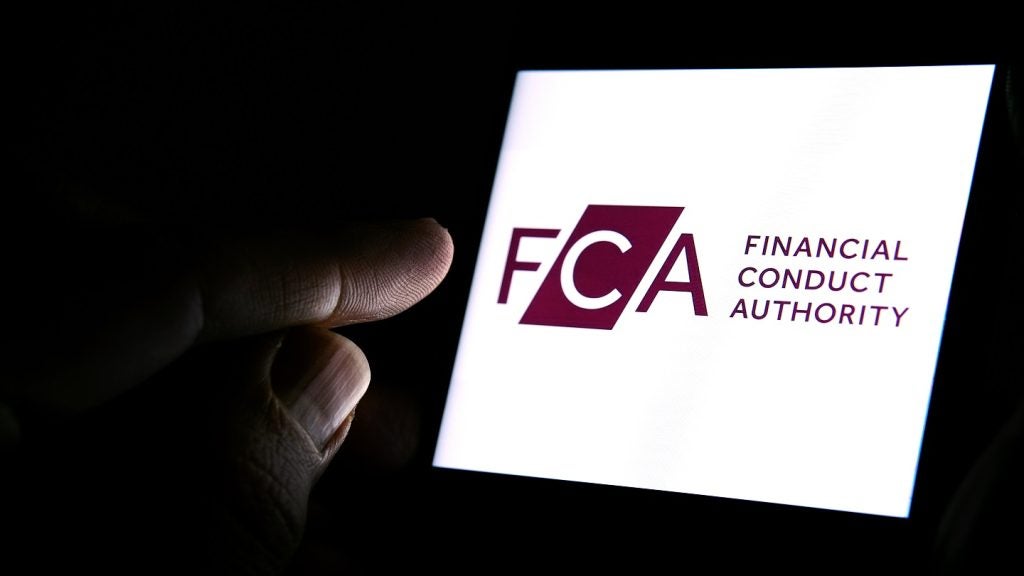Motor Finance met with industry experts to
discuss the issue of claims management companies.
 This
This
month, Motor Finance took the occasion of the Frontline
Solutions F&I conference as a perfect opportunity to host its
eighth round table, focused on the costs associated with the
activities of claims management companies, and the impact they have
on those at the sharp end of regulation and compliance.
The following summary provides
highlights from a wide-ranging discussion during which solicitors,
compliance experts and F&I managers swapped frank opinions.
What’s the current feeling on
compliance? Are adequate explanations working for motor finance
suppliers? Are they working for consumers?
How well do you really know your competitors?
Access the most comprehensive Company Profiles on the market, powered by GlobalData. Save hours of research. Gain competitive edge.

Thank you!
Your download email will arrive shortly
Not ready to buy yet? Download a free sample
We are confident about the unique quality of our Company Profiles. However, we want you to make the most beneficial decision for your business, so we offer a free sample that you can download by submitting the below form
By GlobalDataSteve Reynolds: Don’t
treat compliance as something that’s on your back. We’ve had two
visits from the FSA, the last one for three days, and we got
through that alright.
I’m confused, since the onset of the
Consumer Credit Directive and adequate explanations, as to where
they fit into the process. We want customers, especially on
F&I, taken through a process that can be replicated every time
as a trade model.
On adequate explanations, when we’re
setting up lines of credit for customers, we don’t know their
credit circumstances – so what are we adequately explaining? We
deal with 12 different finance companies; we’ve got hire purchase,
lease purchase, personal loan, top-up loan. Is it clear, fair and
not misleading to a customer to go through 20 different adequate
explanations at that point?
It’s information overload and it’s
contradicting what the regulation has actually set out to do. After
ticking off the proposed demands and needs, we tell the customer
that we work for a panel of lenders and we go through adequate
explanations once a definitive credit line’s been established.
Eddie Fraydon: I
think you’ll find that any dealer group which looks at the
regulation as a sales tool and as a transparency benefit for
customers will have much the same opinion.
I agree with Steve; there’s no way
that you can have those conversations with the customer until your
deal’s pretty much done.
Andrew Currie: We
always phone the customer prior to pay out, making sure all the
data is correct. We ask them: “Did you get a proper explanation? Is
there anything you want answered?” That’s good back-up to the
dealer group. If anybody says they have got some questions, we’ve
answered them before payout and that protects everybody.
Eddie Fraydon: Is
that unique to your finance company? Is it standard across the
board?
Andrew Currie: It
tends to be more standard in the non-prime market than in the prime
market, where you can go through without even seeing any proofs of
affordability.
Once you start moving down the credit
tiers, because of the additional risks, we always want to speak
directly to the customer, checking personal data for a start. We
want to collect telephone numbers and email details for credit
controllers. And, as part of that, we’ve added CCD questions. It
works really well.
Karen Wagstaffe: The
issue I’ve come across from dealers is the audit trail. How do you
prove that you’ve provided adequate explanation and how do you
prove customer affordability? The tick box and the customer’s
signature on the car finance agreement don’t give us enough to
validate what was done.
Steve Reynolds: As a
dealer, we work really closely with lenders, but they’ve left us a
little bit out on a limb because they’ve all got different
processes. If only the FLA could say to lenders: “This is the
procedure.” It’s gone from being fairly standard to even less
standard than it was before. It’s the opposite of what the
regulation set out to achieve.
Andrew Currie: When
the regulations were first mooted, we asked the specific question:
What should we do? The official ruling was that it was for us to
make the decision. We couldn’t be given advice on how rates should
be established.
Eddie Fraydon:
Whenever you have got something that’s open to interpretation, this
is what you get.
Karen Wagstaffe:
We’re all waiting for someone to get caught out and get some
guidance. One QC who writes about CCD issues told the secretary of
state that this was totally unnecessary, but was told to see how it
goes.
Andrew Currie: What
worries me isn’t legal interpretation, it is claims management
companies going to the FOS. Even though we haven’t done anything
wrong, we’re so often asked to give £100 back to the customer and
stung with a £500 fee.
Emma Stirk: That’s
exactly what’s happened with PPI, and it’ll happen with GAP and
warranty. You’ll pay it because you don’t want that complaint being
referred or reported if it’s after the third investigation.
Steve Reynolds: If
it’s going to cost you less than £500, just settle it.
Karen Wagstaffe:
That’s the advice I give.
So what are the
possibilities for change on this? Can regulation be altered
now?
Karen Wagstaffe: In
the supposed outcome of the original CCD, there would have been an
argument for reviewing the regulation. There are already two
amendments.
Andrew Currie: If a
VT question goes to a legal challenge, that could actually bring
clarity to some other cases.
Karen Wagstaffe: It
would be lengthy and it would be expensive.
Andrew Currie: But it
could go all the way.
Karen Wagstaffe: To
return to a point, though, it would be better for the industry if
there was a set procedure outlining the questions you ask upfront
in the sales process so that when you take a proposal from a
customer it proves categorically that you made the right product
decision for the customer. It would give dealers protection from
the CMCs.
At the moment, we might as well set
aside 50% of our F&I profit for complaints. It’s not fair,
because we’re not mis-selling. It’s just an admin loophole that’s
creating this issue.
Eddie Fraydon: It’s
still not going to stop until it goes to court.
Karen Wagstaffe:
Steve, did anything come out of your FSA visits?
Steve Reynolds:
Generally, they said a lot of what we’re doing could be used as a
template for the motor industry. We’re very open with them because
when we found out they were coming we said: “If there is a hit,
we’ll take it.” They were generally happy with what they found we
were doing.
Eddie Fraydon: They
won’t tell you best practice. They expect you to tell them.
Steve Reynolds: Why
can’t they prescribe the way to broach adequate explanation? For
them to say: “It’s down to you how you interpret it” is wrong. On
one hand, the prescriber assists us, then they leave us to it.
Karen Wagstaffe: That
framework is too woolly. It says: “These are the things that must
be done, but how you do it, and how you interpret it for your sales
process, is down to you.”
Is it fair to say that the
increasing
burden of compliance has thrown the business manager position into
crisis?
Eddie Fraydon: No,
I’ll tell you what it has done. A business manager is a salesman –
the best closer in the branch. That’s it, they’re specialists in
one area.
As soon as you start taking them out
of it to do your own compliance, they’re no longer salesman – they
don’t add value to the business anymore. Business managers sell
funding and as soon as you go down this route, to the extent that
you’re talking about, it defeats the object of having them.
I work with a group support F&I
manager. Between us, we spend four days a month auditing the
branches. It’s just dead time. You’re pulling a deal file for the
entirety. You’re then checking the computer systems to reconcile
them, you’re looking at all the hand-written comments to make a
further check and then, on occasion, you’re ringing up customers to
do a spot check. That’s four days we can ill afford to lose. But if
we don’t do it, who’s going to?
Andrew Currie: From a
lender’s perspective, it’s been hard to look at what’s best for the
dealers because we’re so concerned about compliance. For the past
two years we’ve been so blinkered. It’s hard to get on with the
business of lending because we can’t sit down and underwrite
because we’ve got to get all the compliance forms right.
Steve Reynolds: I say
put yourself in the shoes of the consumer. I do spot checks and
phone them up. A regular comment is that there’s too much
paperwork. We’ve tried to cover ourselves by having this wonderful
system, this process that’s four pages long, and really, what the
customer wants, is something in lay man’s terms.
Andrew Currie: They
want a simple checklist.
Could there ever be a
universal script that dealt with these issues?
Karen Wagstaffe:
You’d have to go to the industry and ask: What are the key funding
questions you ask to determine which product is right for your
customer? I think you’ll get a universal set of maybe 10 questions
that help you, as a business manager.
Andrew Currie: The
problem then becomes: a dealer can have a look at those but they
don’t know what they’re looking at. Until an application’s been
made and a search has been done, and an underwriter has interpreted
it, you will have a completely different set of questions that
you’re going to have to ask the customer.
Steve Reynolds: It
comes back to the FLA for a definitive process or set of rules that
we’ll follow in a set order.
Karen Wagstaffe: We
need to develop free resources. Free tools and free fact sheets and
things written in plain English. Give the OFT’s Irresponsible
Lending Guidance another read. It sets out regulation and then
says: “However, don’t work through a checklist because that’s not
enough.”
Eddie Fraydon: The
complication is that, in effect, you’re turning your business
managers into IFAs. At some time, you will have to get them
regulated in their own right. You’ll have to take on more
negotiations to do a very standard job.
Does this impede the drive to
use finance leads as a way to bring car
buyers into dealerships?
Karen Wagstaffe: To a
certain extent, it does. You have to determine affordability and
suitability before taking a prop.
Eddie Fraydon: There
is another side which Steve touched on – making it as easy as
possible for the customer. You go to a dealership; you want to buy
a car. You want it to be easy, pleasurable and memorable. This way
it will be memorable – but for all the wrong reasons.
Nicola Hoskins:
That’s very true.
Steve Reynolds: It’s
not in our interest to put customers into cars they can’t afford.
It detracts from the relationship with the finance partner.
Andrew Currie: Every
month we target our voluntary surrenders and terminations. We ask
the question: Why? They’re all due to circumstance change. When
you’re underwriting how can you factor in something that you don’t
know is going to happen? You can’t.
Karen Wagstaffe: At
the qualification stage, how does the customer know the answer to
the legitimate question: Can you afford these repayments both now
and in the future?
Nicola Hoskins:
That’s the biggest sticking point for me. I don’t see how you can
have that level of subjectivity without getting inside someone’s
head.
Steve Reynolds: PPP,
the one thing that could help them, has been taken away.







